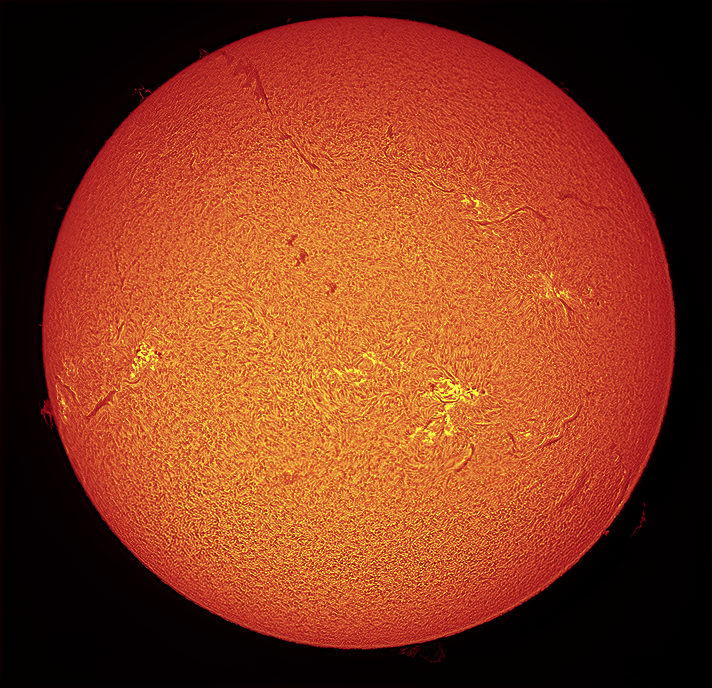The Flaming Star Nebula
Kind of an interesting framing on this one – it looks like it’s reaching out! This is narrowband emissions, in the Hubble Sulphur/Hydrogen/Oxygen palette. Some say there’s no Oxygen emission in this one, but with enough determination I pulled it out – that’s what results in the purples and blues you see here.
















































